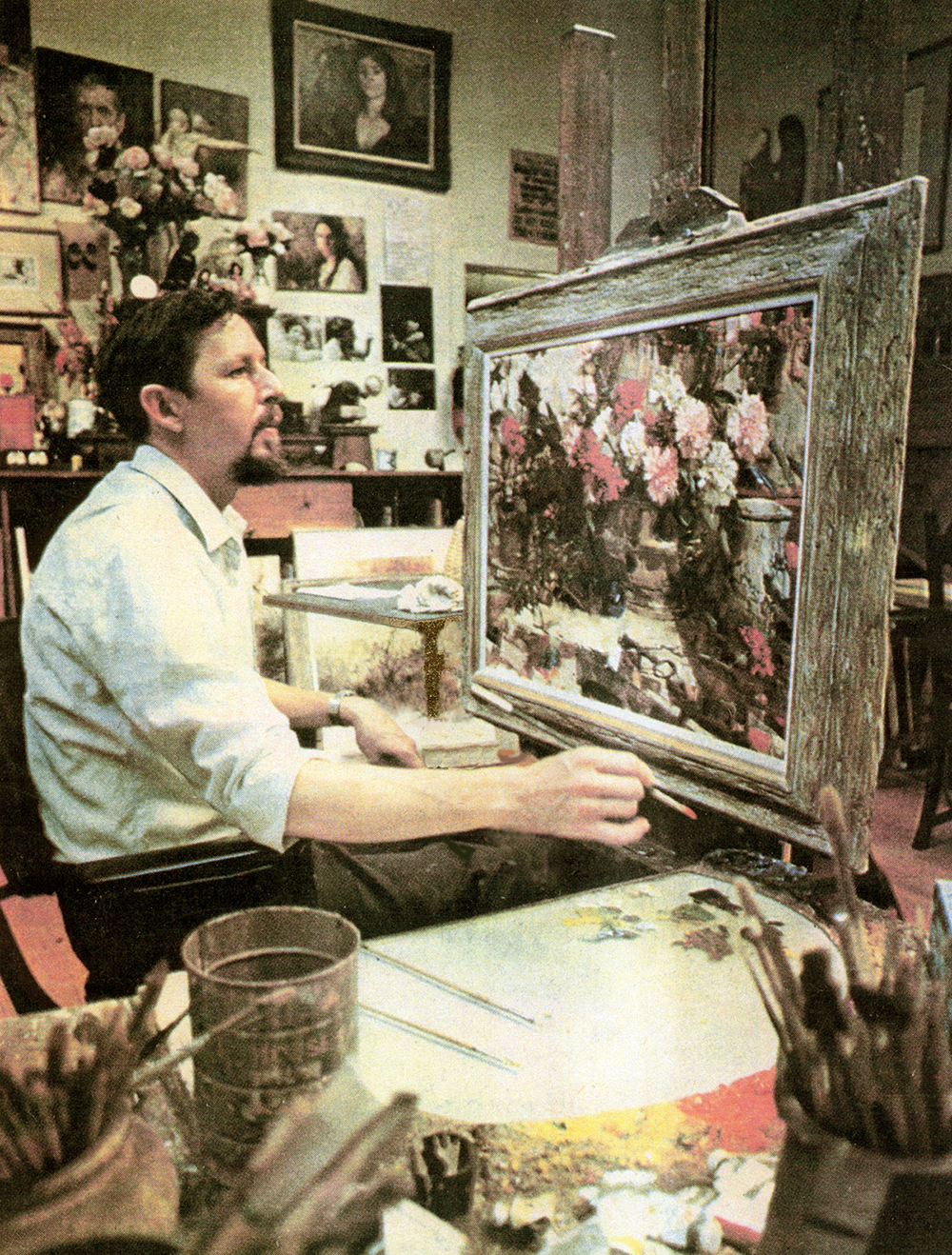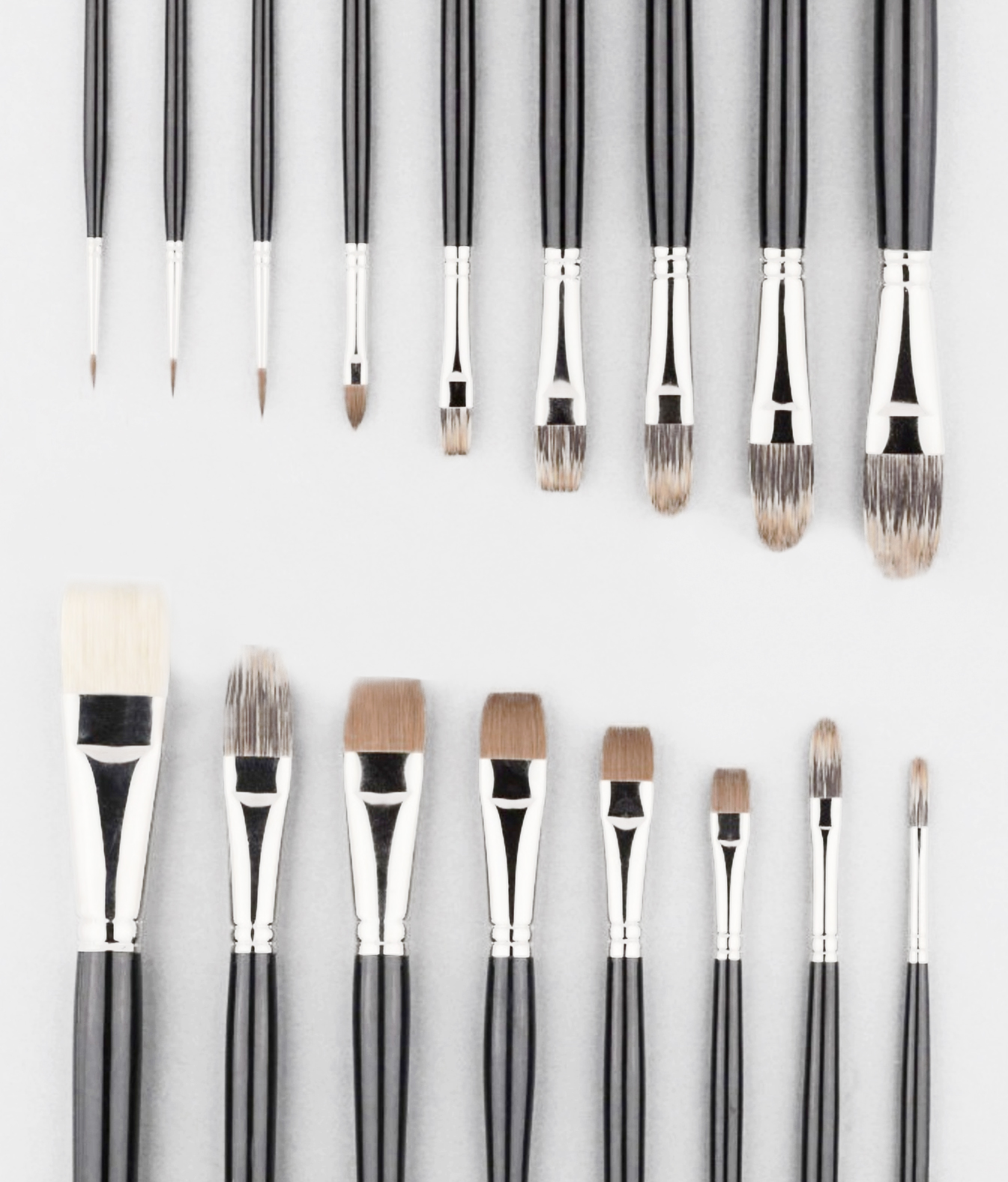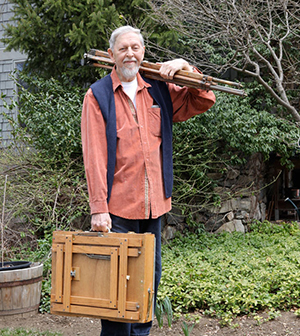tools & materials
Don’t be afraid of your paints and tools. Be in charge. Whether you work with oils, watercolor, pastels, charcoal, acrylic, conté, or all of these—study them! Experiment endlessly, see what they can do and what they can’t. Master them rather than the reverse.
Richard Schmid – ALLA PRIMA II, GOOD HABITS, page 274

Richard painting in his Connecticut Studio, 1974
A NOTE FROM RICHARD
Please understand that while I recommend the products I use, I do so only because they work well for me.
I do not guarantee nor endorse them or have any business or financial relationship with any manufacturers of them.
I have my favorite materials just as you do. I pick and choose from several different brands to suit my needs. I do not have a degree in paint chemistry or the way art supplies are manufactured,
but I have taken the trouble over the years to learn enough chemistry and other information, including the developmental history of artist's materials, to understand how my materials behave. I know how I should use them to not only maximize permanence but to get the most out of my colors.
What I give you here is what has worked best for me over the years.

.
BRUSHES
For my brushes, I now use Rosemary & Co Brushes exclusively. Rosemary offers a Richard Schmid bundle (my most frequently used brushes).
The Schmid Set
ROSEMARY & COMPANY
PO Box 372, Keighley
West Yorkshire, BD20 6WZ England
Tel: (01535) 600090
www.RosemaryandCo.com

Photo courtesy of Rosemary & Co.
PALETTE KNIVES
My palette knives are Italian made (bought many years ago), and are very thin and flexible. There are many brands on the market today. Look for the ones called painting knives. They have the delicacy and flexibility necessary for precise painting.
.
VARNISH
I apply a finishing varnish to a painting when it is sufficiently dry. I allow three months for more heavily painted artworks. I no longer use the varnish I have referred to in my books and prior websites because of a recent problem in their application.
Today I use a conservator varnish, which is completely stable. It not only protects my artworks, but brings out all of my colors and values, and I can adjust the varnish for any degree of gloss I wish. The varnishes I use are:
CONSERVATOR's PRODUCTS COMPANY
UV Stable Finishing Varnish
UV Stable Matte Varnish
OILS & SOLVENTS
Rectified Turpentine Pure Spirits
Gamblin Gamsol Odorless Mineral Spirits
Cold Pressed Linseed Oil
Stand Oil
Lacquer Thinner
Acetone
Denatured Alcohol
PAPER TOWELS
I am often asked what type of paper towels I use. In fact, it's one the most frequently asked questions I get.
I use VIVA paper towels (not Viva Vantage).
.
PALETTE
My studio palette is a 21" x 31"piece of 1/4" plate glass. Below the glass, I have an illustration board with a warm gray paper surface. This gray value allows me to accurately judge my light and dark value mixtures.
I have always preferred a glass palette for studio work as well as for my landscape painting because it is so easy to clean with a razor paint scraper and alcohol. For a landscape palette, I use a smaller, lighter weight window glass, glued to a very thin piece of gray-painted plywood.
.
PAINT (OIL COLORS)
Here is a list of colors on my basic palette as well as additional colors I use as needed or just for fun. With these few colors I can duplicate virtually all the other manufactured colors (at least those worth bothering with).
.
MAIN COLOR PALETTE
Cadmium Lemon
Cadmium Yellow Light
Cadmium Yellow Deep
Cadmium Orange
Cadmium Red
Permanent Alizarin Crimson (Winsor & Newton)
Alizarin Permanent (Gamblin)
Terra Rosa
Yellow Ochre Pale
Transparent Oxide Red
Transparent Oxide Brown
Viridian
Phthalo Green
Cobalt Blue
Ultramarine Blue Deep
Titanium White
ADDITIONAL COLORS
Cadmium Orange Deep
Cadmium Scarlet
Venetian Red
Cobalt Violet Light
Cobalt Violet Deep

Did you know that Richard designed and made his easels and paintboxes by hand?
.
.






